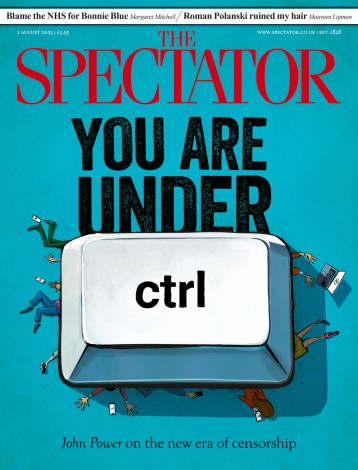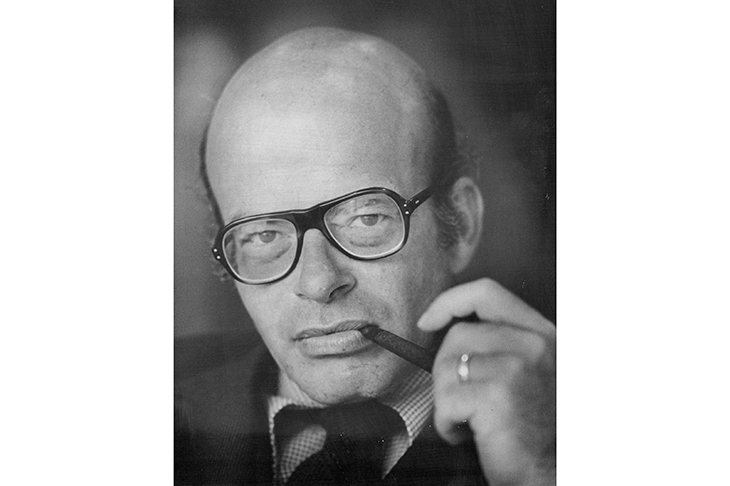In January 1973, Science (along with Nature, the most influential general science journal in the world) published an article that immediately captured major media attention. David Rosenhan, a Stanford social psychologist, reported that eight pseudo-patients had presented themselves at a variety of mental hospitals, 12 in all, complaining that they were hearing voices saying ‘hollow, empty and thud’, but otherwise behaving completely normally.
All of them, he reported, were promptly admitted, and all but one diagnosed as suffering from schizophrenia (the other receiving the somewhat more hopeful diagnosis of manic depressive psychosis). It took weeks for them to be released, though they were instructed to show no symptoms once admitted. When they were finally discharged, they received the damning diagnosis of ‘schizophrenia in remission’, a label that promised to compromise their futures ever afterwards.
At the time the paper appeared, psychiatrists were already under siege. One of their number, Thomas Szasz, had recently pronounced that mental illness was a myth, and that his fellow professionals were little better than gaolers. And the sociologist Erving Goffman had published his best-selling book Asylums, which suggested that mental hospitals created rather than cured mental illness, and could be usefully compared to concentration camps. Now shrinks found themselves ridiculed as ‘experts’ who were incapable of the most basic of tasks, deciding who was mad and who was sane. Rosenhan’s paper caused a sensation, and his exposé resonated powerfully outside the cloistered world of academia.
The leadership of the American Psychiatric Association was thrown into a panic, and within weeks desperately sought ways to render psychiatric diagnosis more reliable. But then, as now, no scans, no blood tests, no laboratory findings allowed them to distinguish the mad from the sane. Perforce, like 18th-century doctors, psychiatrists depended upon symptoms and patient self-reports, and the new system they created in the years that followed thus relied on a tick-the-boxes approach to diagnosis: perm any six symptoms from ten and voila! one was given a diagnosis of schizophrenia; exhibit another set of symptoms, and one was manic depressive, and so forth and so on, for the new Diagnostic and Statistical Manual ran to some 494 pages and 256 different ‘illnesses’. Its mechanical approach, at least in theory, sharply raised the odds that psychiatrists in Topeka, Walla Walla, San Francisco or New York would attach the same label when confronted by the same patient.
In the 1970s, psychiatrists were being ridiculed as ‘experts’ who couldn’t tell who was mad and who was sane
Not coincidentally, when the new manual appeared in 1980, it accelerated the rapid decline of psychoanalysis in America and its replacement by a rigidly biologically-reductionist psychiatry, one that (falsely) claimed that the ‘diseases’ the DSM identified and listed were akin to those that mainstream medicine diagnosed and treated. Rosenhan’s paper can thus be fairly called one of the most influential pieces of social science published in the 20th century.
Some five years ago, three years after Rosenhan’s death, the New York-based investigative journalist Susannah Cahalan came across his work. ‘On Being Sane in Insane Places’ was the only significant scholarship he ever produced, and he lived off this famous paper throughout his career. It occurred to her that it would be fascinating to track down as many of the pseudo-patients as she could, and to explore the circumstances under which Rosenhan had come to undertake his study. The Great Pretender recounts the remarkable investigation that she undertook. The book reads like a fascinating real-life detective story, one whose denouement is only hinted at in its title.
Perhaps Cahalan was tempted to follow its twists and turns because of her own experience with the fallibility of medical diagnoses. Ten years ago, she descended into what appeared to be madness: she hallucinated, experienced a variety of delusions, lost her ability to work, then descended into deep depression and thoughts of suicide. At the last, just before she was to be transferred to the ‘psych’ ward, a neurologist diagnosed her as suffering from autoimmune encephalitis. Her treatment brought her back to the ranks of the sane, but with a new appreciation for the contingencies that are an often overlooked feature of modern medicine.
Once embarked on her exploration of how ‘On Being Sane in Insane Places’ came to be written, Cahalan cast her net widely. Through Rosenhan’s son and his closest colleagues she secured access to a treasure trove of written materials: Rosenhan’s private papers, including his diary; the draft chapters of a book for which he received a handsome advance but never finished (the would-be publisher sued to get the money back); his personal medical records (Rosenhan served as the first pseudo-patient); a list and various fragmentary notes about the elusive other pseudo-patients; and heterogeneous material relevant to the paper’s origins. She began to search diligently for the pseudo-patients and for the anonymous mental hospitals that were alleged to have admitted them. And she consulted a broad range of academic specialists — full disclosure, I was one of them — who could help her contextualise the study and perhaps aid her research.
As her work proceeded, her doubts about Rosenhan’s work grew. At one point, I suggested that she write to Science and request copies of the peer review of the paper. What had the reviewers seen and requested? Did they know the identities of the anonymous pseudo-patients and the institutions to which they had been consigned? What checks had they made on the validity of Rosenhan’s claims? Had they, for example, asked to see the raw field notes?
The editorial office told her that the peer review was confidential and they couldn’t share it. I wondered whether an approach from an academic rather than a journalist might be more successful, and with Cahalan’s permission, I sought the records myself, pointing out the important issues at stake, and noting that it would be perfectly acceptable for the names of the expert referees to be redacted. This time the excuse was different: the journal had moved offices, and the peer reviews no longer existed. That’s plausible, but it is distinctly odd that such different explanations should be offered.
With two and a half exceptions, even as skilful an investigative reporter as Cahalan was unable to locate the pseudo-patients. Rosenhan himself was easily identified as the first of them. His files included his admission as ‘David Lurie’ to Haverford State Hospital in Pennsylvania. (He was then teaching at Swarthmore College.) And internal clues in the files enabled her to track down Bill Underwood, who had been a Stanford graduate student at the time. Another pseudo-patient, Harry Lando, surfaced — once also a graduate student and now an academic — but he only half counts, for, as a usually overlooked footnote in Rosenhan’s paper recounts, one pseudo-patient had been dropped from the study, and this was he. As for the rest: nothing, nada, no trace.
Of course, proving a negative, especially after decades have passed, is nigh on impossible. Perhaps the appearance of The Great Pretender will cause one or more of the missing pseudo-patients to surface, or for their descendants to speak up and reveal their identities, for surely anyone who participated in such a famous study could not fail to mention it to someone. More likely, I think, is that these people are fictitious, invented by someone who Cahalan’s researches suggest was fully capable of such deception. (Indeed, the distinguished psychologist Eleanor Maccoby, who was in charge of assessing Rosenhan’s tenure file, reported that she and others were deeply suspicious of him, and that they found it ‘impossible to know what he had really done, or if he had done it’, granting him tenure only because of his popularity as a teacher.)
Rosenhan’s files provided no link to the real identity of the pseudo-patients, and the staff and colleagues closest to him could offer no help. Nor could the two people Cahalan had identified come up with any information about their alleged counterparts. At various times, Rosenhan had proffered sometimes contradictory biographical fragments about pseudo-patients 2 through to 8, but even with the assistance of a private detective, these leads led nowhere.
In a larger sense, it scarcely matters, because Cahalan uncovered so much other evidence of Rosenhan’s malfeasance and lies. He claimed, for example, to have carefully coached his volunteers before sending them forth. Bill Underwood and Harry Lando emphatically denied this. Lando appears to have been dismissed from the study, not because he violated protocol, but because, as Rosenhan incredulously noted about his confinement, ‘HE LIKES IT!’ And then some of the things Lando reported about his experiences reappeared in the published paper attributed to a different pseudo-patient.
Most damning of all, though, are Rosenhan’s own medical records. When he was admitted to the hospital, it was not because he simply claimed to be hearing voices but was otherwise ‘normal’. On the contrary, he told his psychiatrist his auditory hallucinations included the interception of radio signals and listening in to other people’s thoughts. He had tried to keep these out by putting copper over his ears, and sought admission to the hospital because it was ‘better insulated there’. For months, he reported he had been unable to work or sleep, financial difficulties had mounted and he had contemplated suicide. His speech was retarded, he grimaced and twitched, and told several staff that the world would be better off without him. No wonder he was admitted.
Perhaps out of sympathy for Rosenhan’s son and his closest friends, who had granted access to all this damning material and with whom she became close, I think Cahalan pulls her punches a bit when she brings her book to a conclusion. But the evidence she provides makes an overwhelming case: Rosenhan pulled off one of the greatest scientific frauds of the past 75 years, and it was a fraud whose real-world consequences still resonate today. Exposing what he got up to is a quite exceptional accomplishment, and Cahalan recounts the story vividly and with great skill.






Comments